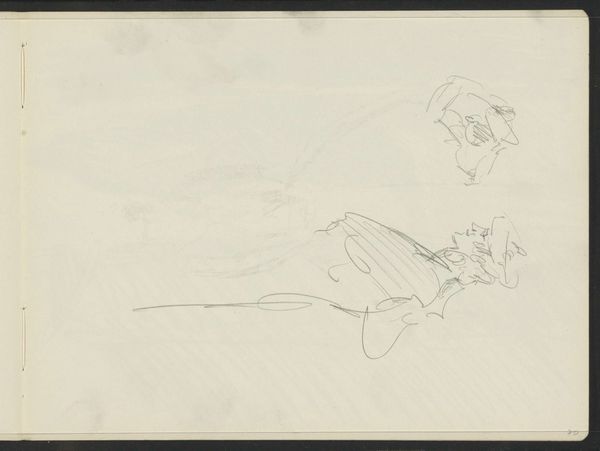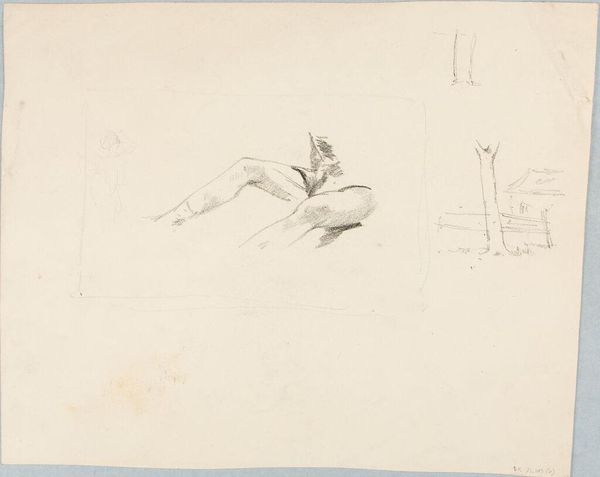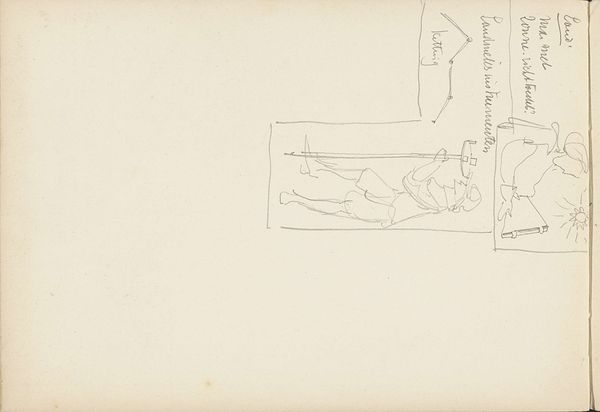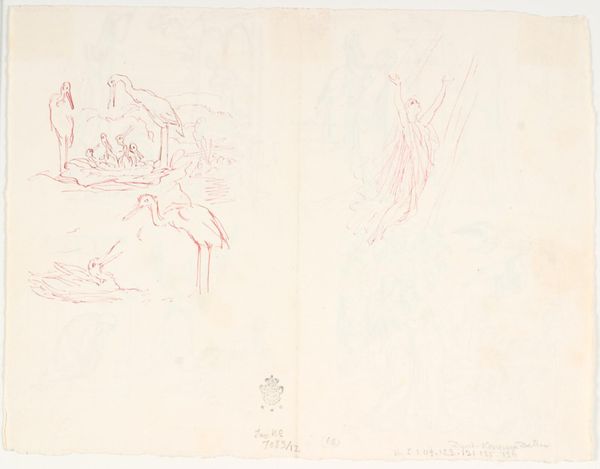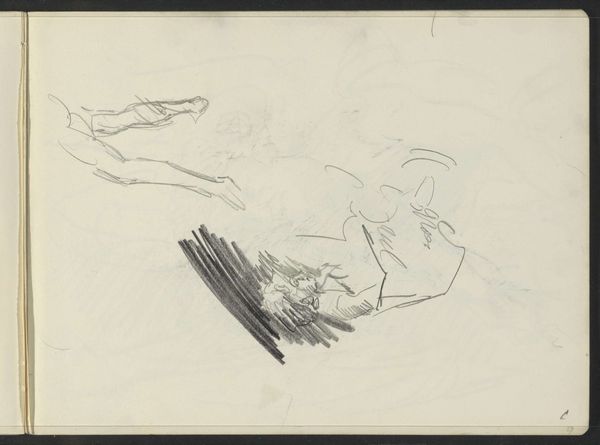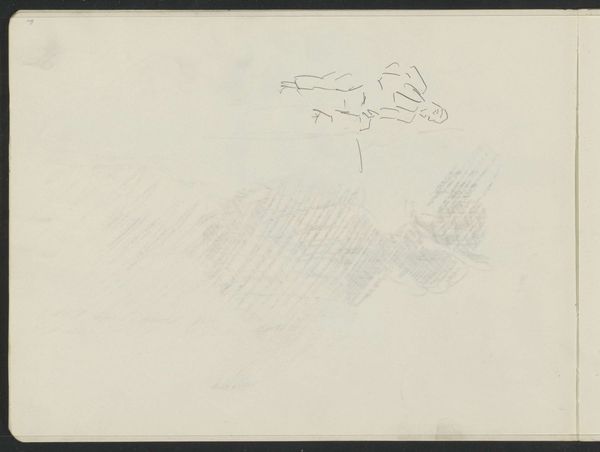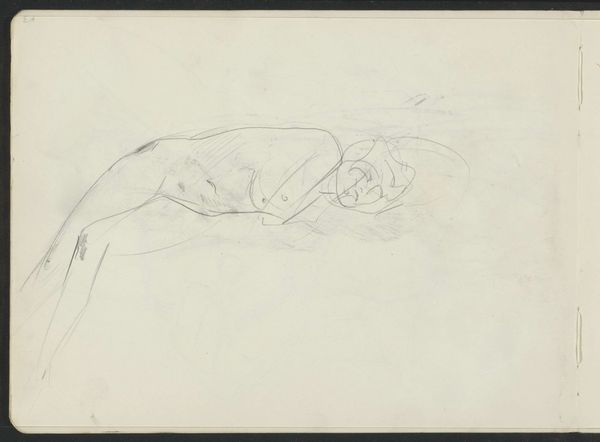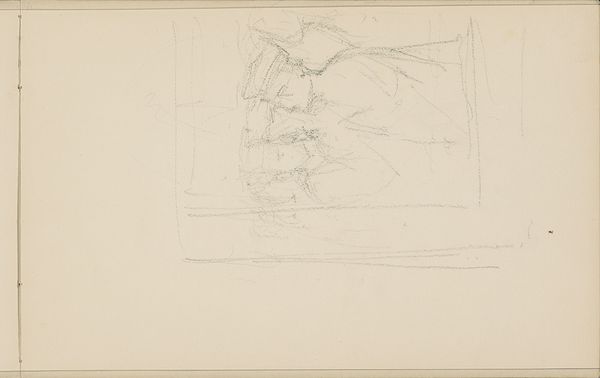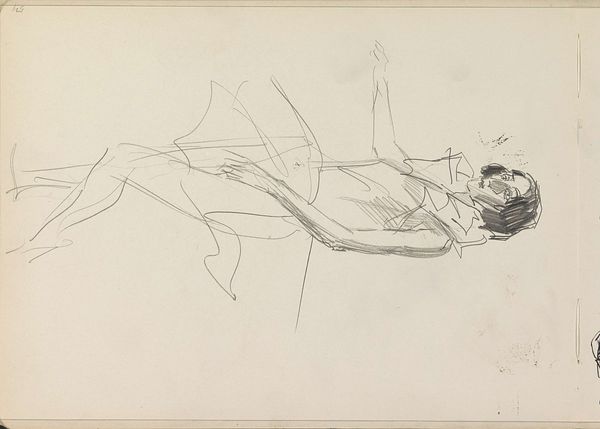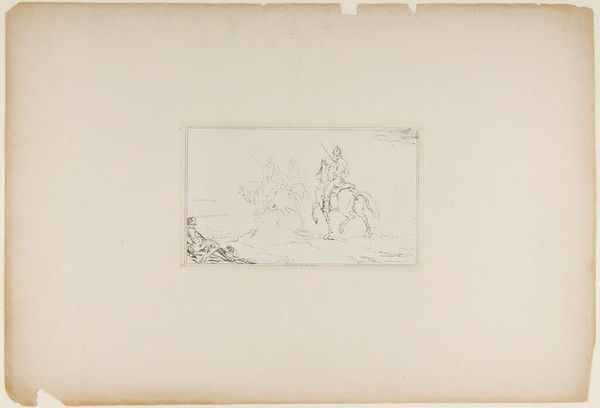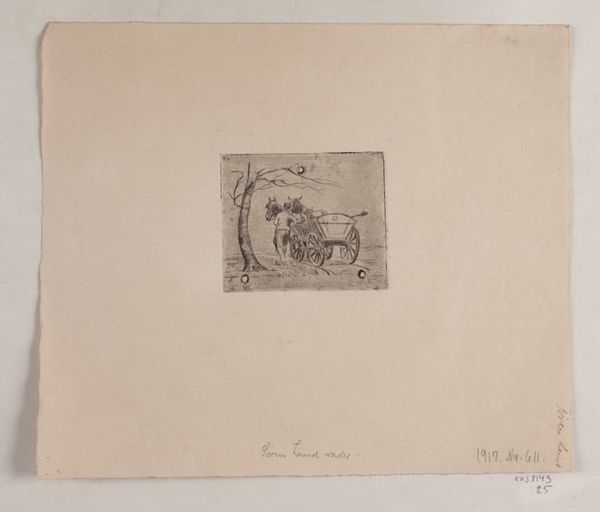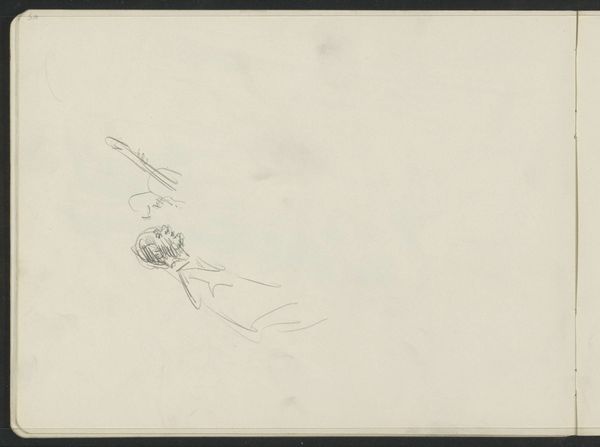
drawing, paper, pencil
#
drawing
#
amateur sketch
#
neoclacissism
#
toned paper
#
light pencil work
#
pencil sketch
#
incomplete sketchy
#
figuration
#
paper
#
personal sketchbook
#
idea generation sketch
#
ink drawing experimentation
#
pencil
#
sketchbook drawing
#
history-painting
#
academic-art
#
nude
#
sketchbook art
Dimensions: 20.6 x 25.4 cm
Copyright: Public domain
Curator: Today we're looking at a pencil drawing entitled "Prometheus (or Tityus)" attributed to Vincenzo Camuccini. Editor: There's something haunting about its stark simplicity. The figure's pose, the sketchy lines—it feels unfinished, raw. Curator: Indeed. This work, rendered in light pencil on toned paper, really offers a glimpse into the artistic process. Consider the materials readily at hand: paper and pencil, tools of accessibility and relatively low cost. It suggests Camuccini's engagement with artistic exploration as labor. Editor: Yet within this economy of means, the composition is strikingly dynamic. The contrasting diagonal lines of the reclining figure and the swooping eagle create visual tension, embodying the very torture depicted. And this is just a simple pencil drawing! Curator: The incomplete sketchy nature hints at the labour involved in producing academic art. Perhaps a study for a larger, more polished piece, which he and his workshop may have eventually profited from? Editor: Perhaps, or the medium contributes to a palpable sense of immediacy and vulnerability. We are so close to the raw draftsmanship. We're peering over the artist’s shoulder as they consider how best to interpret a scene. The almost casual strokes highlight how, even in depictions of mythological agony, artistic intervention dictates our interpretation. The figure’s face seems passive as it stares blankly; our attention shifts to how its composition draws the eye and dictates emotion. Curator: Note the texture of the toned paper; it lends a subtle warmth while also allowing the pencil lines to stand out without being overly harsh. The use of specific paper can suggest market conditions for this drawing in relation to finished painting. Editor: True. The contrast further emphasizes the human form and its tormentor; it captures the eternal struggle on a tangible, material level that echoes its artistic rendering. It emphasizes the structure that embodies agony. Curator: Considering the time that Camuccini lived in, we could examine the artistic system itself—commissioned work versus personal study; how does it reflect the hierarchy between craft and Art with a capital "A". Editor: So, it isn't just a sketch, but a point of artistic interpretation, inviting us to confront the building blocks of how narratives are rendered in a piece of art. Curator: Exactly, that is the core! Looking at a pencil sketch is rarely just seeing an image; it’s observing the historical and material circumstances that surrounded its production. Editor: Yes, by reducing the story to simple material interaction—paper and pencil—Camuccini reveals that artistic power is also its interpretation through the structure that composition allows.
Comments
No comments
Be the first to comment and join the conversation on the ultimate creative platform.

